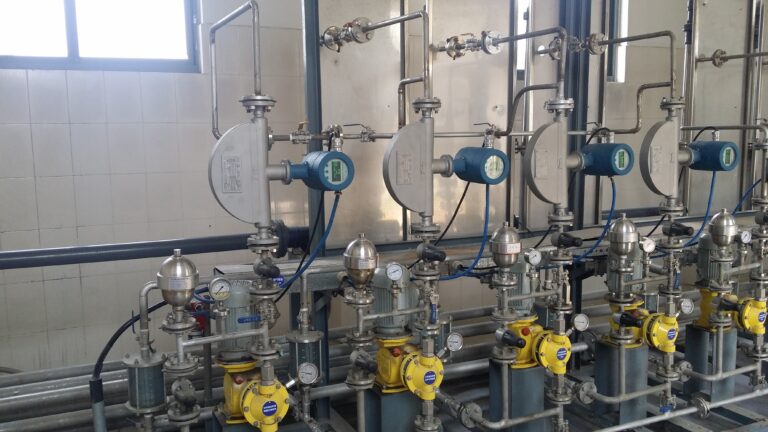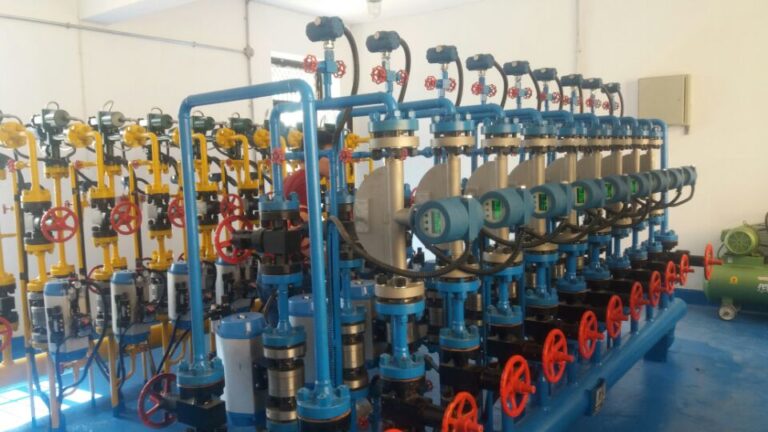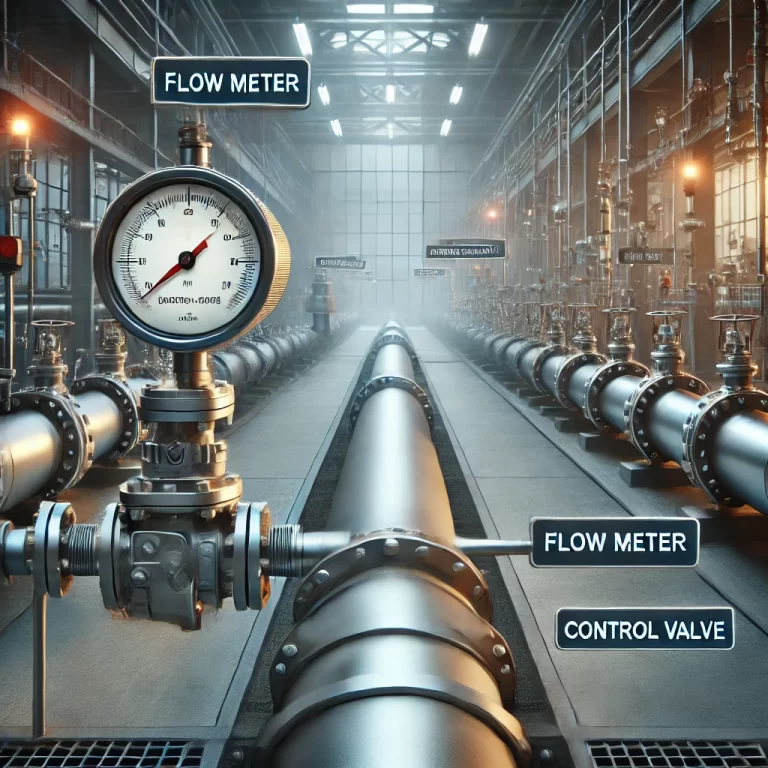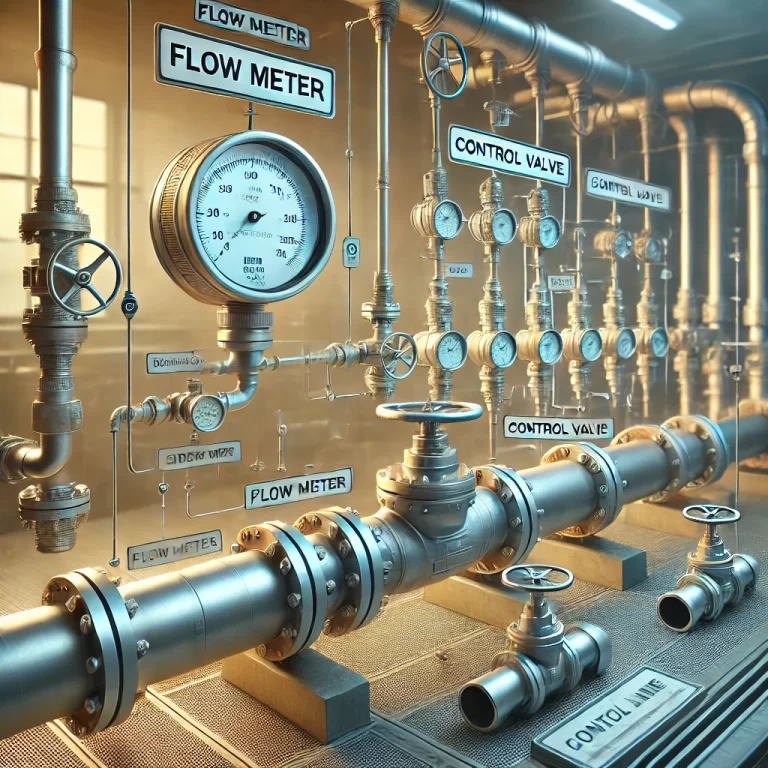When installing flow meters and control valves, the sequence of installation is a critical factor to ensure accurate measurements, protect equipment, and maintain system efficiency. This article explores the best practices for the installation sequence, the reasoning behind these practices, and special considerations for different flow meter types and industrial applications.

1. General Recommendation: Install the Flow Meter First
In most cases, it is recommended to install the flow meter before the control valve. This arrangement ensures both the accuracy and longevity of the flow meter. Below, we will discuss the primary reasons behind this recommendation:
1.1 Ensuring Accurate Measurement
After passing through a control valve, the fluid’s flow characteristics can become turbulent. The presence of swirl, vortex, or other forms of disturbed flow downstream of the valve can severely impact the accuracy of flow measurements taken by the flow meter. Flow meters, especially those designed to measure flow rates precisely, typically require a stable and uniform flow profile for accurate readings. Installing the flow meter before the control valve minimizes these disruptive effects, allowing the flow meter to measure the fluid’s flow rate more accurately.
1.2 Protecting the Flow Meter
Control valves are designed to regulate flow and may cause rapid fluctuations in parameters like pressure and velocity during their operation. These sudden changes can potentially damage the flow meter or affect its performance if it is installed downstream of the valve. By positioning the flow meter before the control valve, it is shielded from such disturbances, thus prolonging its service life and maintaining its measurement reliability.
In addition, the installation should include sufficient straight pipe lengths before the flow meter (typically 5-10 times the diameter of the pipe) to allow the flow to stabilize, ensuring that the flow meter receives a consistent and uniform flow profile.

2. Special Considerations for Different Types of Flow Meters
While the general guideline is to install the flow meter before the control valve, there are exceptions depending on the type of flow meter and specific operational requirements.
2.1 Flow Meters with Special Installation Requirements
Certain types of flow meters, such as positive displacement meters (e.g., rotary or gear meters) and turbine meters, may have specific installation preferences. For instance, some meters, like the rotary flow meter, may have particular installation guidelines that require the meter to be positioned upstream of the control valve to ensure measurement accuracy. Additionally, when performing onsite calibration of these flow meters, special isolation valves or quick-connect fittings may be needed to cut off the flow to allow for calibration without disrupting the flow system.
2.2 Application-Specific Needs
In some industrial applications, the flow meter may need to be installed downstream of the control valve. This could be due to certain process constraints, such as the need to measure flow after the valve for control purposes or due to the configuration of the piping system. However, this is usually a less common situation and requires careful consideration of the flow meter’s tolerance to flow disturbances and the overall stability of the system.
For instance, if the fluid being measured is already stable and the control valve operates under consistent conditions, the flow meter may be able to tolerate the less-than-ideal flow conditions downstream of the valve. In these cases, the installation can be adjusted accordingly, but only after thorough evaluation of the process dynamics.

3. Considerations for Space and Practicality
3.1 Space Constraints
In some installations, particularly in confined spaces or complex piping layouts, it may be more practical to install the flow meter downstream of the control valve. This might occur when the space available upstream of the valve is insufficient to meet the installation requirements for the flow meter, such as the necessary straight-pipe length.
In these cases, the flow meter may need to be placed downstream of the valve, but it is important to ensure that the flow conditions are as stable as possible before the meter, which can be achieved by adjusting the piping layout or adding flow straighteners. These steps can mitigate the disturbances caused by the valve, improving the flow meter’s performance.
3.2 Advanced Evaluation and Testing
Before deciding on the final installation position of the flow meter, it is crucial to perform an assessment that includes system testing and simulations to evaluate how different configurations will affect the accuracy of the flow measurement. This can involve evaluating the flow behavior with and without the valve in place, considering the fluid’s properties, and analyzing the operational conditions of the valve.

4. Summary and Conclusion
To summarize, the best practice in most cases is to install the flow meter before the control valve. This helps to ensure the accuracy of the flow measurement, protects the flow meter from damage caused by valve-induced disturbances, and maintains the longevity of the equipment. However, specific circumstances—such as the type of flow meter, application requirements, and space constraints—might necessitate alternative configurations.
In some cases, such as when a flow meter is more resistant to flow disturbances or when the application calls for it, the flow meter may be installed downstream of the control valve. Regardless of the choice, it is important to always evaluate the flow conditions, the specific meter’s capabilities, and the system’s operational needs to ensure optimal performance and longevity of the equipment.
